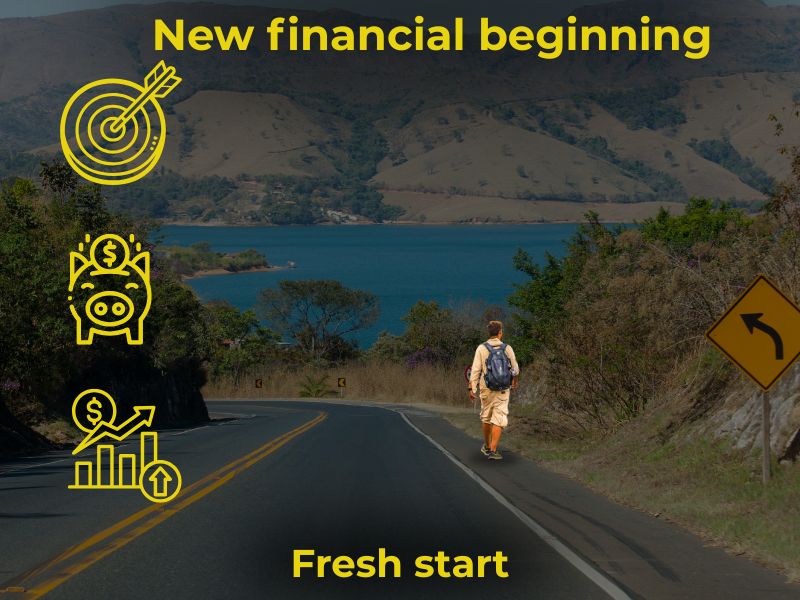Life doesn’t always go as planned. A job loss, medical emergency, divorce, or unexpected debt can turn your financial world upside down. But no matter the cause, financial setbacks don’t have to define your future — they can become turning points.
In this article, you’ll learn how to recover from a financial setback step by step, rebuild your confidence, and create a stronger, more resilient financial foundation.
Step 1: Accept What Happened — Without Shame
The first step in rebuilding is emotional, not financial. It’s easy to feel overwhelmed, embarrassed, or even defeated after a setback. But setbacks happen to everyone.
You’re not a failure — you’re simply in a new chapter.
✅ Let go of shame, and replace it with a mindset of curiosity, growth, and action.
Step 2: Assess the Damage Honestly
Get a clear picture of where you stand. This may be uncomfortable, but it’s essential.
Create a snapshot:
- Total debt (credit cards, loans)
- Missed bills or collections
- Current income and expenses
- Savings or assets remaining
Use a spreadsheet or budgeting app to organize everything.
✅ Knowledge is power — you can’t fix what you can’t see.
Step 3: Stabilize Your Situation
Focus on immediate priorities:
- Secure income (temporary work, side jobs, unemployment benefits)
- Cut non-essential expenses (subscriptions, dining out)
- Contact creditors to negotiate or defer payments
- Prioritize essentials: housing, food, transportation, health
If needed, seek community or government support — there’s no shame in getting help.
✅ Stability first, then growth.
Step 4: Create a “Bare Bones” Budget
Design a minimalist budget that covers only the essentials:
- Rent/mortgage
- Utilities
- Food
- Insurance
- Transportation
- Minimum debt payments
This helps you stay afloat while creating space to rebuild.
✅ Once you’re stable, you can begin adding back other expenses.
Step 5: Start a Mini Emergency Fund
Even during a crisis, aim to save something — even $10/week.
Goal: $500 to $1,000
Use a high-yield savings account
Automate deposits if possible
✅ This fund protects you from falling further behind when small emergencies strike.
Step 6: Tackle Debt Strategically
If debt is part of your setback, take control:
- List all debts from smallest to largest (or highest to lowest interest)
- Choose a strategy:
- Snowball method: pay smallest first
- Avalanche method: pay highest interest first
- Make consistent extra payments (even small ones)
- Avoid new high-interest debt
✅ Contact creditors to ask about hardship programs or lower interest rates.
Step 7: Rebuild Credit Gradually
Financial setbacks often hurt your credit. Here’s how to improve it over time:
- Pay all bills on time (biggest credit score factor)
- Keep credit utilization low (under 30%)
- Consider a secured credit card to rebuild history
- Check your credit reports for errors (free at AnnualCreditReport.com)
✅ Credit recovery takes time — but it’s absolutely possible.
Step 8: Increase Your Income
More income = faster recovery. Explore:
- Part-time or freelance work
- Gig economy options (ride-sharing, delivery)
- Selling unused items
- Upskilling (online courses, certifications)
✅ Even an extra $200/month can accelerate progress significantly.
Step 9: Set New, Achievable Goals
Once you’re stable:
- Build a 3–6 month emergency fund
- Resume retirement contributions
- Create a debt-free timeline
- Set a specific savings goal (e.g., for a car or housing)
✅ Keep goals SMART: Specific, Measurable, Achievable, Relevant, and Time-bound.
Step 10: Celebrate Progress — Not Perfection
Rebuilding takes time, patience, and resilience. Celebrate small wins:
- Paid off a credit card?
- Saved $100?
- Made 3 months of on-time payments?
These are major victories. They build momentum, confidence, and hope.
Final Thoughts: Your Comeback Story Starts Now
Financial setbacks can feel like rock bottom — but they’re also a powerful opportunity to rewrite your money story. With time, action, and self-compassion, you can come back stronger, wiser, and more financially secure than ever before.
Start where you are, use what you have, and never underestimate the power of small, consistent steps.
FAQ – How to Rebuild Your Finances After a Setback.
What should I do first after a financial setback?
Start by accepting what happened without shame. Emotional recovery is key to moving forward. Then assess your current financial situation honestly — including income, expenses, debts, and savings.
How can I stabilize my finances quickly?
Focus on securing income, cutting non-essential expenses, and prioritizing essentials like housing, food, and transportation. Contact creditors to negotiate payments and explore assistance programs if needed.
Why is a bare-bones budget important during recovery?
A minimalist budget helps you cover only what’s necessary while creating room to rebuild. It ensures you stay afloat without accumulating more debt during the early stages of recovery.
How do I start rebuilding my credit after a setback?
Pay bills on time, keep your credit utilization below 30%, and consider tools like secured credit cards. Regularly check your credit reports for errors to stay on track.
What long-term goals should I focus on after stabilizing?
Aim to build an emergency fund, pay down debt, restart retirement contributions, and set SMART goals for savings. Celebrate small milestones to stay motivated along the way.

